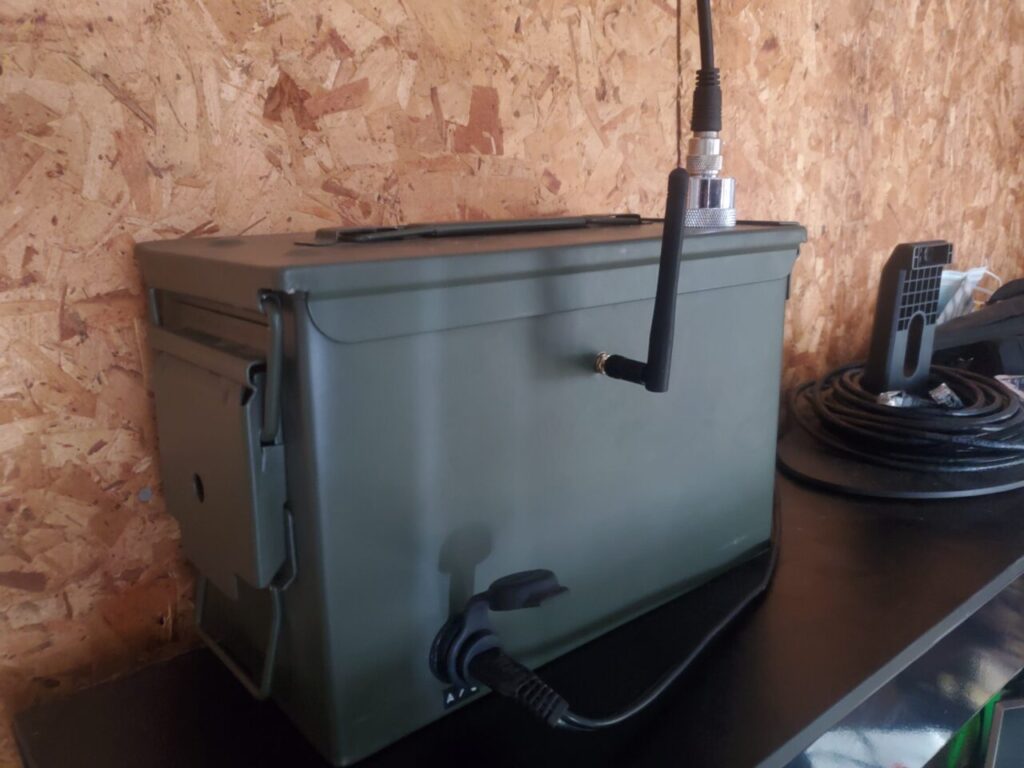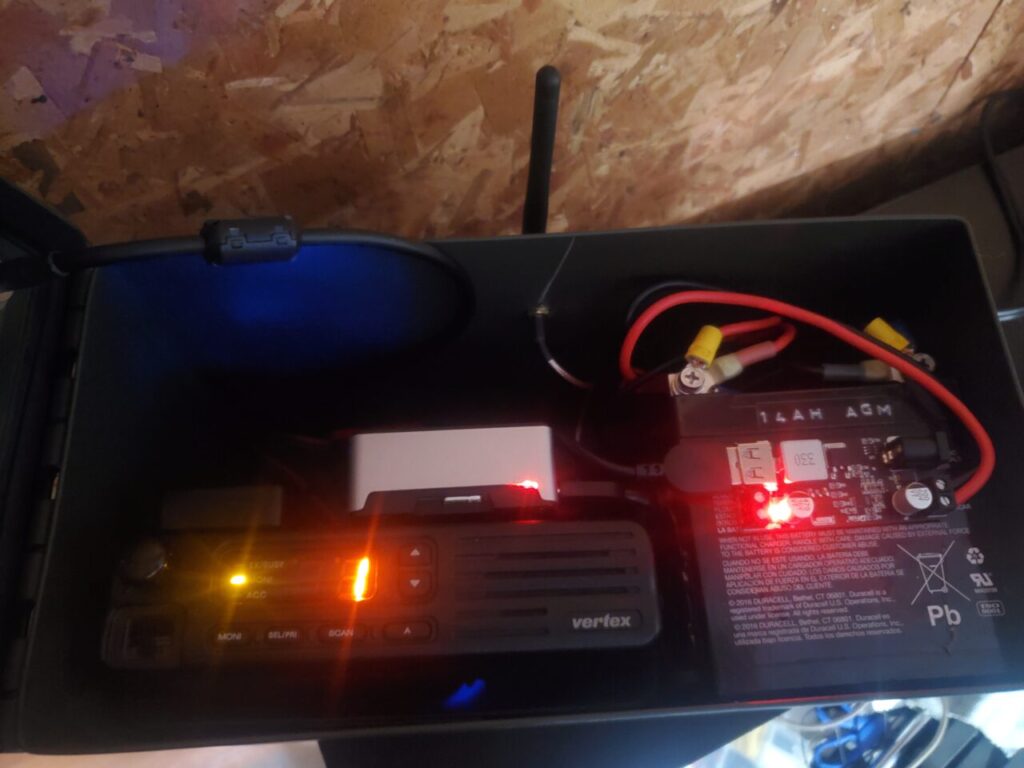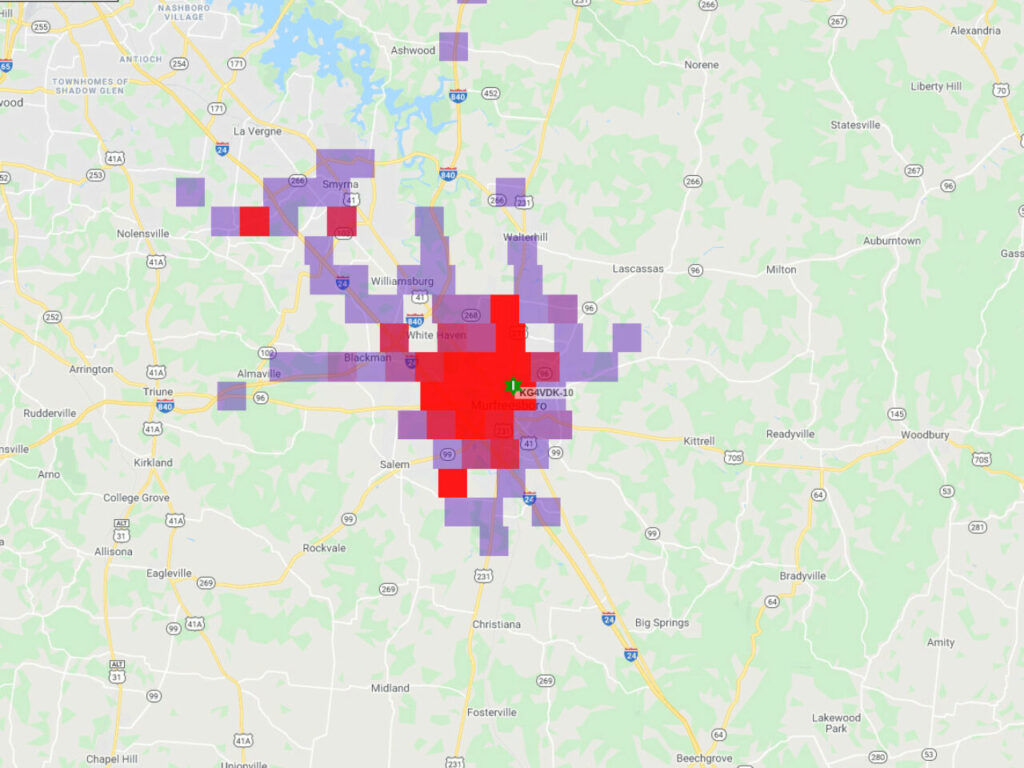Recently, I moved from an apartment to a house. This gave me the opportunity to do some radio related things with fewer space restrictions. So, I decided to put together an APRS digipeater and I-Gate using a Raspberry Pi running Xastir, a Mobilinkd TNC, and a surplus commercial radio found on eBay. I chose to use Xastir for the simple reason that, although it can be complicated, the documentation available (mailing lists, primarily) is quite helpful. I also chose to configure it as a RX/TX I-Gate, as there didn’t seem to be many around my location. My goal is to help increase the reliability of messaging over APRS for users without RF capability (e.g. APRSdroid via TCP/IP connection).
As with all things ham radio, the most important part of a station is the antenna system. I initially tested my setup with a 1/2 wave NMO antenna (no ground plane required) near my desk in the house. It performed, but only just. I couldn’t reliably receive or transmit packet beyond a few blocks it seemed. I then changed to using a roll-up J-Pole antenna hanging in the attic space of the garage. This performed better, so it was a move in the right direction. Now, I’ve moved on to my “permanent” antenna installation. I am now using a 1/2 wave antenna by TRAM mounted to the eave of the garage on a Winegard eave mount. The antenna itself is about 42” tall, and the top of the antenna is at about 20ft above ground level. As currently set up, I am getting 20W out and and SWR of 1:1.01. As, you can see in the image at the top of this post, I can now reliably RX/TX for miles around my location.
For the gubbins of the station, I wanted a compact and transportable solution. I enjoy camping, and I want to be able to take the digipeater with me. I settled on using a standard ammo can, with a 14AH 12V battery inside. The battery is kept charged using a Battery Tender, and in turn it powers a 12V/5V converter for the Raspberry Pi 4 and the Mobilinkd TNC. The radio I’m using is a Vertex VX-2000V I got for about $40 on eBay. I chose this radio because it is compact, puts out 25W, and has a DB-9 connector on the rear of the radio. the DB-9 connector allows for a simple TRRS cable to be interfaced between the radio and the TNC. The antenna connection is an NMO base on the lid of the ammo can which can accomodate a mobile style antenna when out and about. I use an NMO to SO-239 adaptor when at home to connect to the feedline coming from the base antenna.
I also used a wi-fi dongle with an external antenna input with the Pi to allow for better range when the box is closed. This allows me to connect to the Pi via VNC when it is at home and on my local network. The internal wireless adapter of the Pi is doing duty as a hotspot. When away from home, I simply join the hotspot network, and I can connect in the same fashion.
The Pi is configured to start Xastir anytime it boots, after checking for the presence of the Bluetooth TNC. It also checks for an internet connection, since it is configured to act as an I-Gate as well. However, in the event that internet connectivity is unavailable, Xastir still starts and works as a digipeater without the I-Gate functionality. If you have any questions or suggestions, feel free to reach via email, or preferably radio. That’d be pretty cool!







